15. January 2018
 Among the employees and managers we meet who work in agile environments, more and more have recently asked us how to deal with dominant informal leaders. Both sociometry and group dynamics know informal leadership as a key phenomenon: it is a frequent cause of a range of social tensions in groups and teams.
Among the employees and managers we meet who work in agile environments, more and more have recently asked us how to deal with dominant informal leaders. Both sociometry and group dynamics know informal leadership as a key phenomenon: it is a frequent cause of a range of social tensions in groups and teams.
What we are talking about here are members of groups and organizations who have no other form of legitimation than their power of persuasion in groups. They dominate through their group behaviour. Their motivation to be dominant often has little to do with an advanced grasp of the matter at hand. Informal leadership would not pose a problem if it were enacted for the good of the matter. However, it often has negative side effects: loss of motivation, frustration and a reduced output among the other team members.
Self-organization is a highly challenging form of cooperation: it often lacks the regulatory function of a formal leader, or insecurities prevent that function from being perceived. As group-dynamic processes develop, the known side effects emerge: phenomena of stress, withdrawal by individuals, fights for dominance, and often the entire undertaking gets bogged down in the group’s dysfunctional type-casting. This is often the point where methodical purity is invoked. In a classic act of organizational thinking, the methods are further refined and bureaucratized.
However, it is a fallacy to believe that methodical purity can fix this problem. Rational rules can hardly grasp an emotional phenomenon and they can certainly not stage a sensible intervention. It takes emotionality in order to influence emotionality.
There is a good example for the negative effects of over-methodization. During the last years, we have been able to watch how Continuous Improvement approaches have lost their force and effect through over-methodization and over-regulation, stifling their original impulse to use a few simple methods in order to invite people to joyfully join in and participate. A restraining corset of methods will stifle such emotionally effective and important powers as passion, willingness to design and be self-effective.
All agile methods and forms of work contain a noticeable aspect of group dynamics through self-organization and the reduction of a formally powerful leadership role. These aspects contain much positive energy as long as the participants are involved, are given a common centre and are able to reflect on the power play within the group. As this often fails to happen, however, the group dynamics are allowed to unfold their negative effects. In order to work successfully, however, we need a joint deep understanding of social phenomena and a common language that helps us address them.
The specifications provide for an accompanier who is to watch over adherence to the methods. Yet, these accompaniers usually miss the necessary training and experience to be able to intervene in group dynamic phenomena. Agile coaches with the necessary experience of group dynamics can be of help here. That very experience, however, is often neglected in most trainings.
In order to be able to find a path to functioning self-organization, groups will require an accompanying experience to reflect what is happening to them and to others in groups. We now often engage in group coachings, working with groups who employ agile work methods or want to and should be working in agile ways. In theses sessions, even the reflection of just a few experiences within the group suffice to gain distance from some of the negative dynamics and thereby unlock the group’s potential.
An unreflected, dominant informal leadership makes potentially so very rich groups even poorer than single individuals can be. This loses us engagement, knowledge and ability. Therefore I issue here my plea for widespread group-dynamic learning in organizations as well as a warning to avoid an over-methodization of those forms of work that are based on emotional involvement.
Rüdiger Müngersdorff
3. January 2018
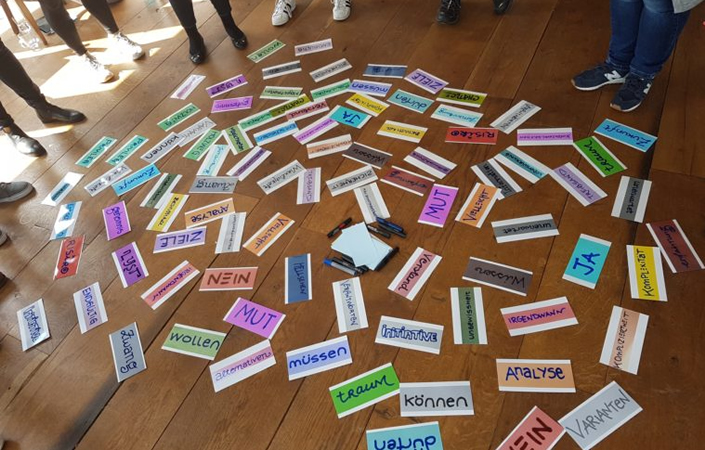
Does »Agility« and »Controlling« fit together? On the ICV ControllingBlog Hans-Peter Sander, Head of the ICV Team PR/New Media, tells about his Agile Culture Coach training that he completed in five modules in 2017 at SYNNECTA. Today: »Agile Teams and Collaboration«
If a company wants to be successful in the market, it needs creative, well-functioning employees. People work well when they enjoy doing it. For this they must find satisfaction in their actions. Above all, they need a meaningful job, a chance to work when and how much they want. And they need recognition from the community. For agile teams: The leadership must provide for appropriate conditions. Because agile work is by no means arbitrary, but has clear frames and orders. – How it all works, the Module IV of the Agile Culture Coach training informs, under the heading »Agile Teams and Collaboration«. Renate Standfest and Fetiye Sisko, both principals at SYNNECTA, both experienced female coaches, guide this elementary, exciting, instructive part of the training, as well as deep insights into the group of participants.
The starting point is the question how an »agile team« is composed, and which factors determine its success. Interesting discussions arise e.g from the outlined ideal of the »cross-functional« and »self-organized« team, in which a so-called »musketeer attitude« (»one for all – all for one!«) prevails, and in which the so-called »bus« factor applies (no head monopolies, pair programming) and work in the »T-Shaped Professionals«; Employees who combine the strengths of a generalist and a specialist.
Many exciting conversations in this workshop, based on Module III »Agile Methods and Scrum«, build the success factors of agile teams:
- Clearly defined job for the team
- Joint learning (for example dealing with a missing hierarchy)
- Role clarity, role uniqueness
- Impediments are identified but ignored
- Retros/Reviews not according to scheme F!
- Key skills: self-reflection, self-criticism, questioning everything!
- »Roles instead of jobs« (flat or no hierarchy, responsibilities)
Fuel for thought provides a lively discussion on the subject of »fundamental orders in social systems«. For example, what are the consequences if »affiliation takes precedence« (in the sense of: »every employee is equivalent«)? All members should be considered in important decisions; also difficult. And is the second »principle of temporal order« (»who is there longer, takes precedence«) not often violated in processes of change, by only favoring and praising what’s new?
The next principle, »Higher commitment takes precedence«, points in particular to the fact that leadership or executives must not be called into question; Managers, however, have to develop their position through greater commitment, leadership skills and behavior. And if the principle, »competence and achievement take precedence«, applies, special achievement, effectiveness, abilities should be shown; how can (power) conflicts arising from this be solved? The next principle, »acknowledging what is«, is to recognize realities that are no longer changeable: saving personal energy, letting go of the old helps to turn to something new. And finally, the principle of »giving and taking« has its deep meaning: where there is a balance between giving and taking, social relations can also harmonize.
Agility and conflicts
In this training module, a lot of place take up conflicts in an agile context. It starts with an interesting discussion on dealing with conflicts concerning culture: corporate, leadership or error culture. It’s intensively taught, as in all components of the training again with playful exercises, how to deal with conflicts within agile teams. The participants experience e.g. something about »systemic consensus«: Instead of using the sledgehammer approach »The stronger wins«, proceeding with the approach »What is important to us together?« and finding a solution. I noted an interesting quote: »The respect for a human being is shown in dealing with his No.«
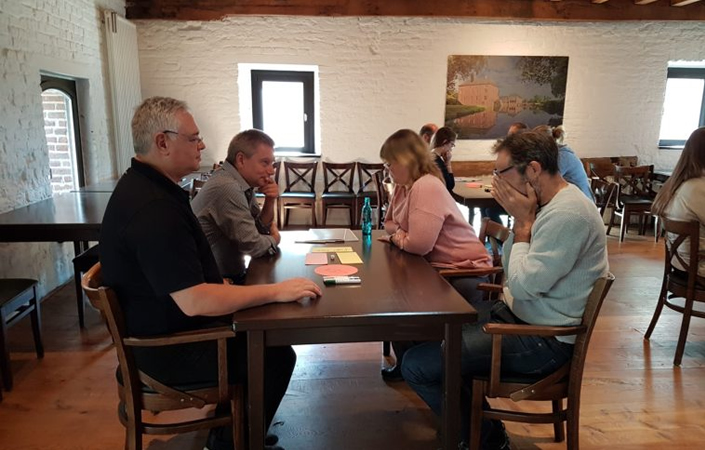
Finally, »Conflict Dojo« is a highlight on the first day of the seminar. In the playful conflict training, the players meet in small groups in several rounds on different character types and must deal with them: from a stubborn resistance through a conflict violent or a compassionate to a solution-seeker. (Picture: role playing at the »Conflict Dojo«)
Diversity: Elementary topic for successful agile teams
An important part of Module IV is »Diversity«. The seminar leaders convince with sensitivity that it is an elementary topic for successful agile teams. They succeed, like a simple-sounding and challenging task of everyday life, in recognizing commonalities and differences, preventing any discrimination, sensitizing them in different exercises. The seminar participants become familiar with creating the necessary transparency in taboo topics and getting to know formal as well as informal rules as well as tools for agile teams.
For example, while working with a »Diversity Insight Picture«, it is about the participants‘ reflection on diversity in themselves, but also in their experience, in the professional world as well as in the world as a whole. In organizations, this can be an analytical tool to explore needs in the context of business goals. It can help in the diversity strategy development and in the change of the corporate culture. In another exercise, the diversity lineup is tested: a highly emotional experience for some participants.
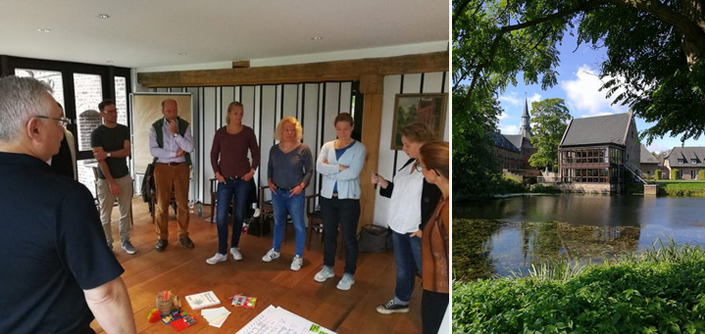
A weekend seminar with many group exercises – in picturesque surroundings, the Seminarhotel Schloss Wissen.
Hans-Peter Sander
blog.icv-controlling.com
12. September 2017
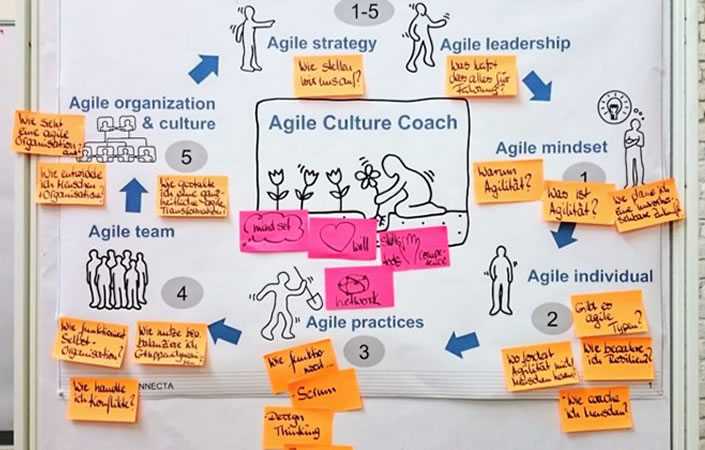
»Agility« and »management control« – that’s a match! Even this year’s large Munich »Controller Congress« agreed when they titled the event »Agile controlling in digital reality: Managing upheavals successfully«, didn’t they? Or is it not a match after all, as some critics raise in discussions time and again? I have a fantastic opportunity: I have been invited to delve deep into the topic with a professional training course to be an »Agile Culture Coach«! These blog contributions will report on my experiences.
This training course takes the form of five modules, which each last several days, over the course of a year: »Agile Leadership and Participation«, »Agility and Personality«, »Agile Methods and Scrum«, »Agile Teams and Conflicts«, »Agile Organization and Culture«. Together with 13 other participants, I am enjoying this training course by and with SYNNECTA, consultants for organizational development and change management in Cologne. It is already the third run of this course: the hosts are visibly proud to be able to name it »the original«.
»Agile Leadership and Participation«
The first three-day-module is titled »Agile Leadership and Participation«. It is a fascinating start which goes far beyond a mere introduction for guidance and terminology. We address »agile strategy« (How to we take position?), »agile leadership« (What does that mean for management?) and »agile mindset« (Why agility? What is agility? How do I plan for an unforeseeable future?)
So, what is »agility«? The views are generally hazy. Our two trainers Renate Standfest and Dr. Johannes Ries are perfectly right to mention that the word »agile« is often even used as an excuse for appointments not kept, responsibilities abused. They make a convincing case, however, that the term has its basis in »valuable thoughts and concepts« that go far beyond »showmanship and bullshit bingo«. It is these notions that give teams, organizations and management a scope for action in the current times, which our trainers describe as a »VUCA situation«.
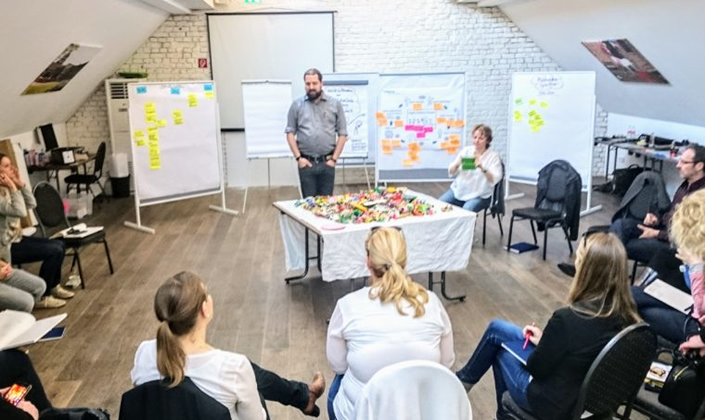
Our »current times«, dominated as they are by digitalization, political upheaval, climate change, etc. are, as is generally known, described as a »VUCA world«. VUCA comprises »volatility« (instability and fast, ground-breaking change), »uncertainty« (even incalculability), »complexity« and »ambiguity« (without simple cause-and-effect relations, ambiguity is on the fore). »Linear methods« no longer apply in this world of VUCA: so what will work?
How are we to understand »agility«? Out course instructors will not provide a »single, 100 per cent« definition. They note the »dimensions of agility« and recommend the »agile manifesto« as a basis. This »Manifesto for Agile Software Development« (it was signed by 17 persons from the field of programming in 2001) points out several key points:
- they consider »individuals and interactions« more important than processes and tools;
- they deem a »functioning product« more important than extensive documentation;
- they explicitly favour »cooperation with the client« over any (contract) negotiations;
- they expressly consider »reacting to change« more important that following a plan.
The SYNNECTA experts derive 12 principles from this manifesto: client satisfaction, openness for change, iterative development, intensive cooperation, focus on a motivating environment, face-to-face communication, functioning products as a measure of progress, steady speed, technical excellence and good design, simplicity, self-organization and self-reflection. »This list is a good summary of the mindset that is necessary for all agile practices and configurations to work«, states Ries.
Effectuation: means guidance, affordable loss and more
The course focuses on agile practices and methods that facilitate the above-named principles. »Scrum«, for example, is a term that comes from software development and by now has entered further fields. This agile method (it will be treated in depth in the third module of the course) is aimed at reducing the »scale of effort« as far as possible.
»Effectuation« is a concept that particularly catches my interest during this first module of my Agile Coach course. Once again, we are addressing hands-on consequences of the changing world, and in particular our world of work. »The dominant theme here is not ›either or‹, it’s ›as well as‹!«, explains SYNNECTA expert Renate Standfest. »With an uncertain future, where the environment can be changed and the aims negotiated, we’re on perfect ground for effectuation.« We are used to problem-solving by way of »linear causal processes«, but now is the time to recognize the circumstances, coincidences and unplanned events as opportunities and deliberately not draw a line. We are presented with a stimulating list of four principles of effectuation:
- Principle of means guidance: instead of choosing or creating the means and ways to achieve a previously defined goal, this means finding goals and results that are achievable within a given set of means.
- Principle of affordable loss: guide your investment at hand of the affordable loss, not the expected result.
- Principle of circumstances and coincidences: circumstances, coincidences and the unexpected should be used as an opportunity rather than being shut out.
- Principle of agreements and partnerships: to be made with those who are ready to take part.
Module I of my Agile Culture Coach training course is filled to the brim with a plethora of highly interesting input. I am convinced that that’s a match for the world of controlling! There is plenty of thought-provoking content on offer in these first three days alone. I had many, many new insights, from dimensions and principles of agility to effectuation, fascinating methods such as landscaping, the Stacey matrix, daily meetup, etc., and even playful elements like the team-building »marshmallow spaghetti contest« as well as the very personal presentations by the individual course participants at hand of Lego and Duplo bricks.
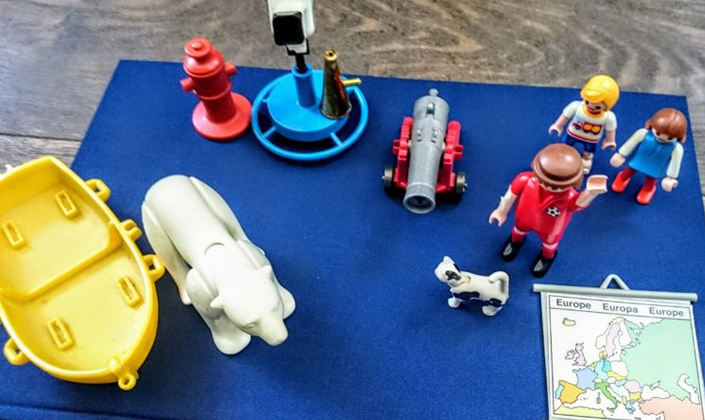
Hans-Peter Sander
blog.icv-controlling.com
7. December 2015

»Agility« has become a key term for anyone keen to show that they are »ahead of the times«. Yet, at the same time, use of the word often elicits negative reactions and rejection. Beyond showmanship and buzzword bingo, however, the term hides valuable notions and concepts that can enable teams, organizations and managers in VUCA situations.
The notion of agility that is often encountered in discussions is usually notably imprecise; this may be so because the term has a wide range of nuances that come out in different given contexts. I will briefly sketch out these different aspects of »agility« in the following in order to bring some clarity to the discussion. At the end of each paragraph, references to earlier texts are included that cast more light on the topic touched on in the paragraph.
»Agile«
The thesaurus provides several synonyms for »agile«: words such as »nimble«, »active«, »spry«, »lively«, »brisk«, »quick«, »swift«, »lithe«, »supple«, »fit«. This range of associations is largely related to activity, which has to do with the etymology of the term: the Latin word agiliscomes from agere, »to do«, »make« or »act«. The current range of meanings emerged primarily from the software industry, where programing and project methods have been »agilized« by way of alternative approaches.
Agile Mindset
In 2001, seventeen persons from the programing sector signed the Manifesto for Agile Software Development, which focused on four points: individuals and interactions were considered more important than processes and tools, just as working software was taken to be of greater significance than comprehensive documentation. Customer collaboration was favored over minute contract negotiation and greater importance was placed on response to changes than following a plan. The manifesto resulted in twelve principles: client satisfaction, openness for change, iterative development, intensive collaboration, focus on a motivating environment, face-to-face communication, working software as a measure of progress, constant pace, technical excellence and good design, simplicity, self-organization and self-reflection. This list provides a good summary of the mindset it takes to achieve success in any agile practice and configuration.
Also see the blog entries VUCA-Aikido, Improvisation, Agile and lean
Agile Practices and Methods
Agile practices and methods are designed to each in their specific way turn the above-named principles into practice. In the software industry this includes approaches such as Adaptive Software Development, Crystal, or Extreme Programming. Scrum has by now emerged for the fields beyond software development. Scrum is the best known among a range of agile methods. It endeavors to reduce effort as much as possible by defining a development framework within which a team of developers organize themselves to work empirically and iteratively in what is known as increments to achieve the product. Each (partial) function of the product should be completed – including planning, development, realization and testing – within short intervals known as sprints (no longer than 30 days each). The team of developers, who organize themselves to deliver the product functionalities, work together with the Product Owner, who is responsible for the product, and the Scrum Master, who ensures that the few existing rules of scrum are adhered to. Together, they regularly reflect on product, process and cooperation in order to increase efficiency and learn from each other.
Agile Team
An agile team is usually a small group of colleagues who have a clear, shared goal that they aim to reach by self-organization without a supervisor. That does not mean that an agile team lacks leadership. Informal leadership usually emerges from within the team or group out of each type of task and situation: one member will adopt topical leadership for a time, for example, but will pass it on once the situation changes. An agile team can, but does not have to, use agile practices and methods. Ideally, however, an agile team will reflect regularly on themselves and will, if necessary, accept supervision. Transparency and an open feedback culture are fundamental conditions for a group to be able to work as an agile team. The team should be as diverse as possible. Ideally, agile teams are interdisciplinary and cross-functional. The members should have different and complementary T-profiles: i.e., all team members are generalists (horizontal bar), but in addition can each provide depth in a different area of expertise (vertical bar). This makes an agile team best prepared for complex situations and unexpected events.
Also see the blog entries Multitude, Pirate Leadership
Agile Organization
An agile organization aims to realize the values and principles of the agile manifesto whilst retaining the greatest possible proximity to their client. While there is no clear definition, most agile organizations are described as decentralized organisms that shift »power« from the center to the periphery. Minor, autonomous units which carry responsibility for themselves closely »dock on« to the client in order to recognize and fulfill the client’s wishes without delay. These »cells« are independent of each other; therefore, the organism as a whole will not be in danger when a single unit is in trouble. At the same time, the minor parts of the organization are able to unite with others by way of collaboration if that brings an advantage to all concerned. This structure makes it possible for the entire organization to be established or disbanded at speed: it can at any moment be rescaled »upwards« or »downwards«. A service platform at the center of the organization seeks to bundle the synergies of the parts of the organization and makes them available to the periphery. At the same time, all organizational units are tied into a dense network so that they can learn from each other.
Also see the blog entry Organism
Agile Strategy
Agile strategy goes beyond exact planning by defining a fuzzy vision (Bouée) that is broad enough to permit a range of approaches. The primary approach is one of effectuation. The actors are guided by the means that are already available and identify the potential that is inherent in all potential goal options. Financial planning is not focused on return on invest but on the maximum affordable loss: this minimizes risk. Strategy is implemented iteratively, step by step, employing efficient tactics and putting circumstances and coincidences to use rather than trying to eliminate them. The establishment of trusting partnerships that use co-creation and risk minimization make a solid base for such an effectuation strategy.
Also see the blog entries Chinese Strategy, Narration, Effectuation
Leading Agility
Agility can only be fully realized by an alternative form of leadership. Management will no longer position itself above the team and at the head of the organization, but instead will lead from the side or out of the center. Leading agility means to trust in and enable the potential of the employees’ intrinsic motivation and the abilities of individuals and groups to organize themselves (Theory Y). A leader who supports agility curates topics, is available to coach the team and will provide and accept detailed and intensive feedback. Such kind of leaders consider themselves the organization’s gardeners: they foster and cultivate a culture of trust and appreciation within which the entire employees’ potential can come to full bloom…
Also see the blog entries In-Waste-Ment, Curation (German), Irreparability, Pirate Leadership
Agile Transformation and Agile Culture Coaching
Companies and organizations who want to establish agility usually face a massive cultural shift. Agile transformation means generating change in many aspects of agility at the same time: bringing people into a new mindset and introducing agile practices into use, building new teams and re-configuring organization, creating new strategic plans and leadership models. These changes can be professionally designed with the accompanying help of experts who have substantial knowledge on the topic of agility and are able to deal with people, organizations and cultures out of their experience with processes. In order to support agile transformation from within companies, SYNNECTA will offer a new qualification in agile process accompaniment (including preparation for Scrum Master Certification) from April 2016: Agile Culture Coach Training.
More information on Agile Coach Training available here (German).
Johannes Ries
 Among the employees and managers we meet who work in agile environments, more and more have recently asked us how to deal with dominant informal leaders. Both sociometry and group dynamics know informal leadership as a key phenomenon: it is a frequent cause of a range of social tensions in groups and teams.
Among the employees and managers we meet who work in agile environments, more and more have recently asked us how to deal with dominant informal leaders. Both sociometry and group dynamics know informal leadership as a key phenomenon: it is a frequent cause of a range of social tensions in groups and teams. 






